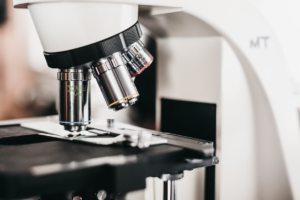APPLICATIONS OF TECHNOLOGY:
- Commercial optical microscopes
- Scientific research
- Semiconductor fabrication
- Quantum phenomena exploration
BENEFITS:
- Enhanced visualization of transparent materials
- High contrast visualization of embedded layers in 2D heterostructures
BACKGROUND:
Optical microscopy is a crucial part of studying van der Waals (vdW) heterostructures, which are materials that have gained significant attention in the nanotechnology and semiconductor research fields due to their potential in developing high performance electronics and exploring novel quantum phenomena. However, using optical microscopy to study these heterostructures has some limitations. Some transparent 2D materials, like hexagonal boron nitride (hBN), are difficult to visualize using standard microscopy because of their low contrast. Additionally, many monolayer materials are very difficult to monitor and align when they are stacked in thick layers. These factors create challenges in studying vdW heterostructures.
TECHNOLOGY OVERVIEW:
Researchers at Berkeley lab have developed a reflective phase-contrast microscope, which uses interference effects between the scattered light from the sample and the unscattered light to visualize transparent specimens. Unlike traditional phase contrast microscopes, which require a transmissive geometry, this microscope is operable to visualize 2D heterostructures on various types of wafers. This microscope incorporates spatial light modulators, providing independent control over the illumination and reflection of light. This microscope was able to visualize monolayer and multilayer hBN on various substrates with high contrast, allowing for advanced study of important materials for applications in high performance electronics and quantum phenomena. More strikingly, the invention enables direct observation of 2D monolayers embedded inside a thick heterostructure that are ‘invisible’ in conventional microscopy.
DEVELOPMENT STAGE:
Laboratory scale, similar system validation in relevant environment
PRINCIPAL INVESTIGATORS:
Feng Wang, Haleem Kim
IP Status:
Patent pending
OPPORTUNITIES:
Available for licensing or collaborative research

